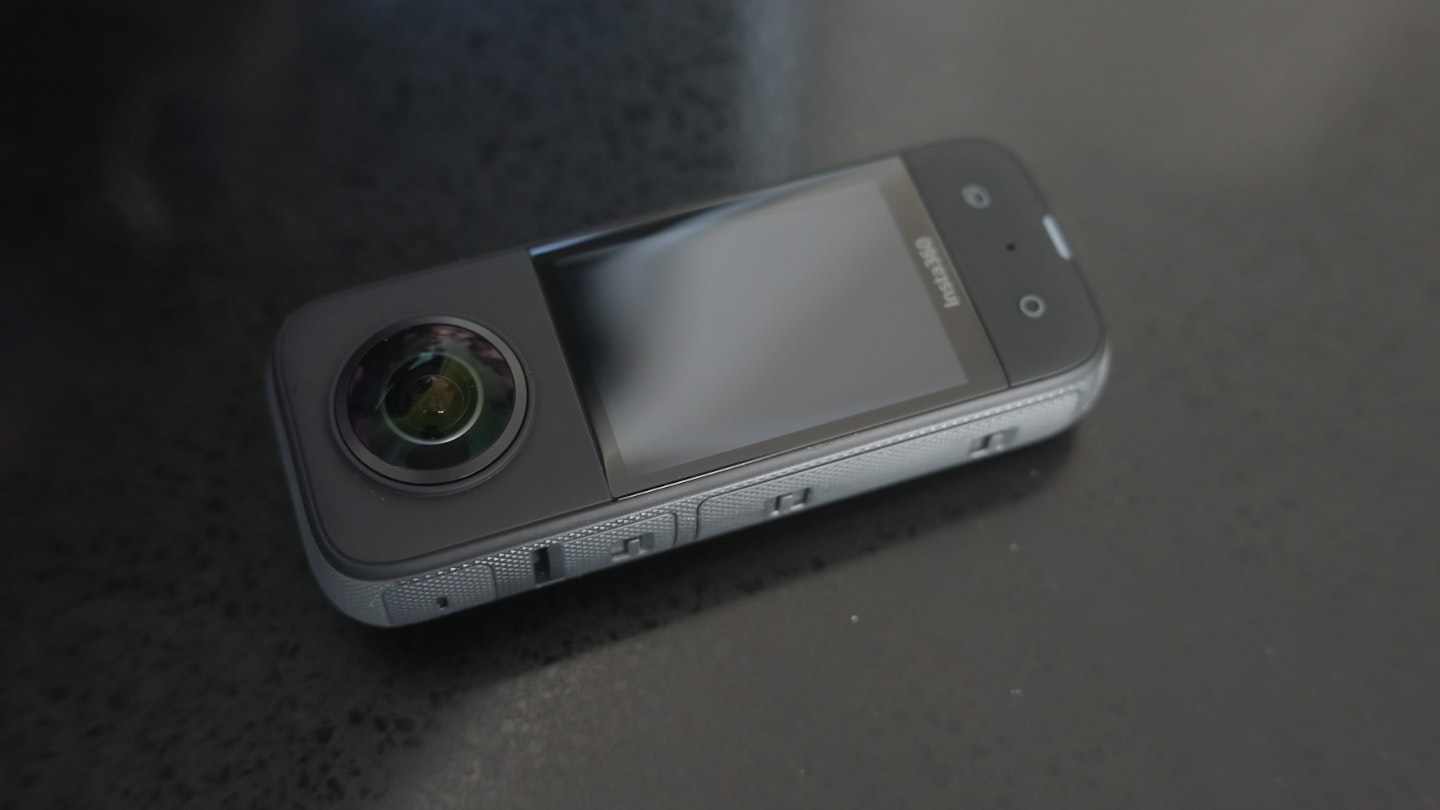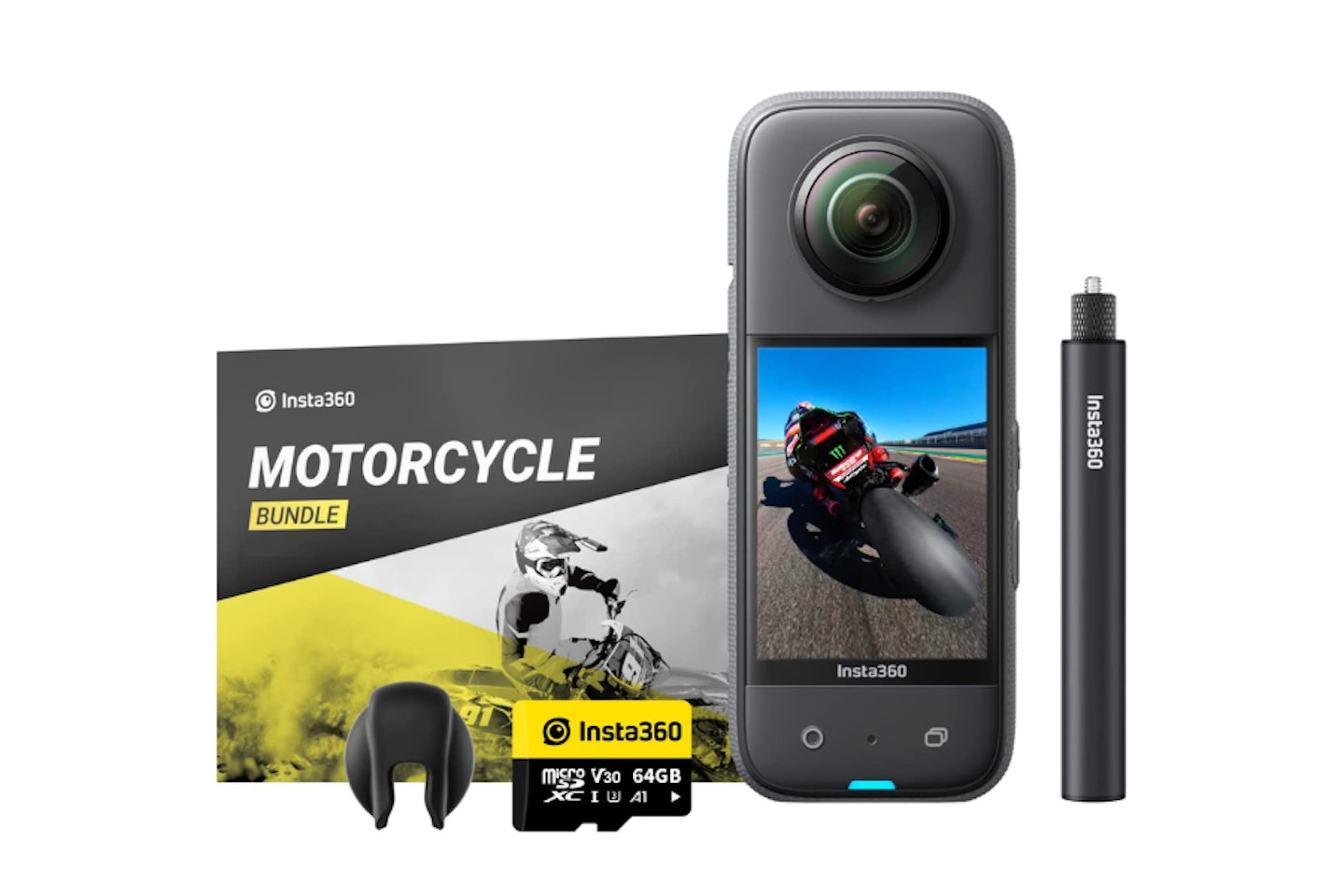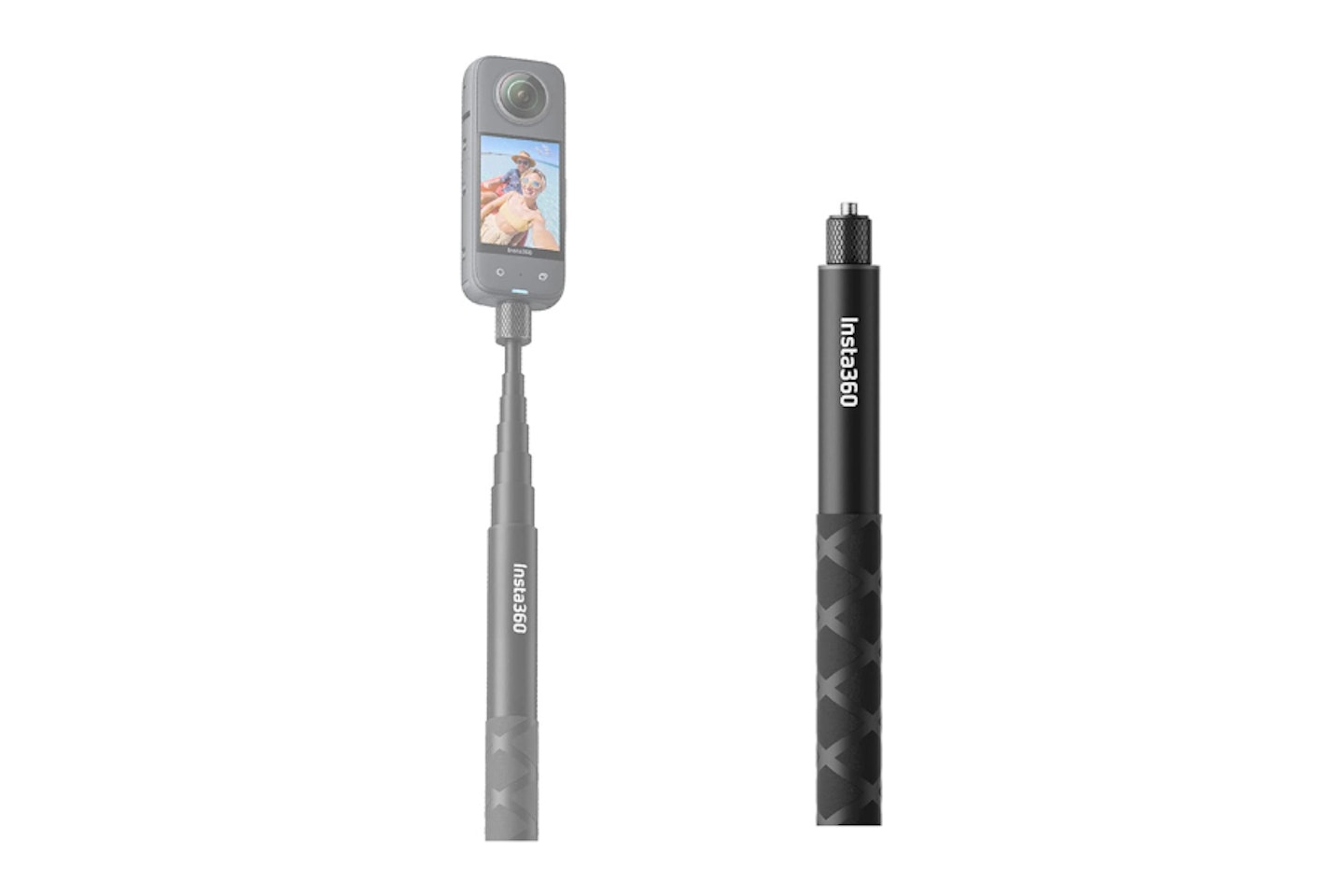The world of action cameras used to be exclusively occupied by GoPro, but in the last few years, that stranglehold has been eroded thanks to competing manufacturers such as the master drone aficionados, DJI and of course, the ever-brilliant Insta360. The latter has released modular action cameras that give users the versatility of changeable lenses, but it’s also released wearable cameras like the GO 2, and, naturally, 360-cameras like the X3.
Like the X2 before it, the X3 doesn’t give you any choice of attachments or modules, it instead includes two high-end fisheye lenses to deliver 360-degree camera footage. What the X3 lacks in versatility, it more than makes up for in build quality and overall specs. However, at £460, it’s certainly not cheap, costing more than the vast majority of the competition – both from GoPro and Insta360 itself.
So how does it compare to its predecessor the X2, and is it worth the price jump over Insta360’s other action cameras? I've got my hands on the Insta 360 X3 for full-fledged testing, just to see how brilliant 360-degree cameras can be, and if the X3 is quite worth its price.
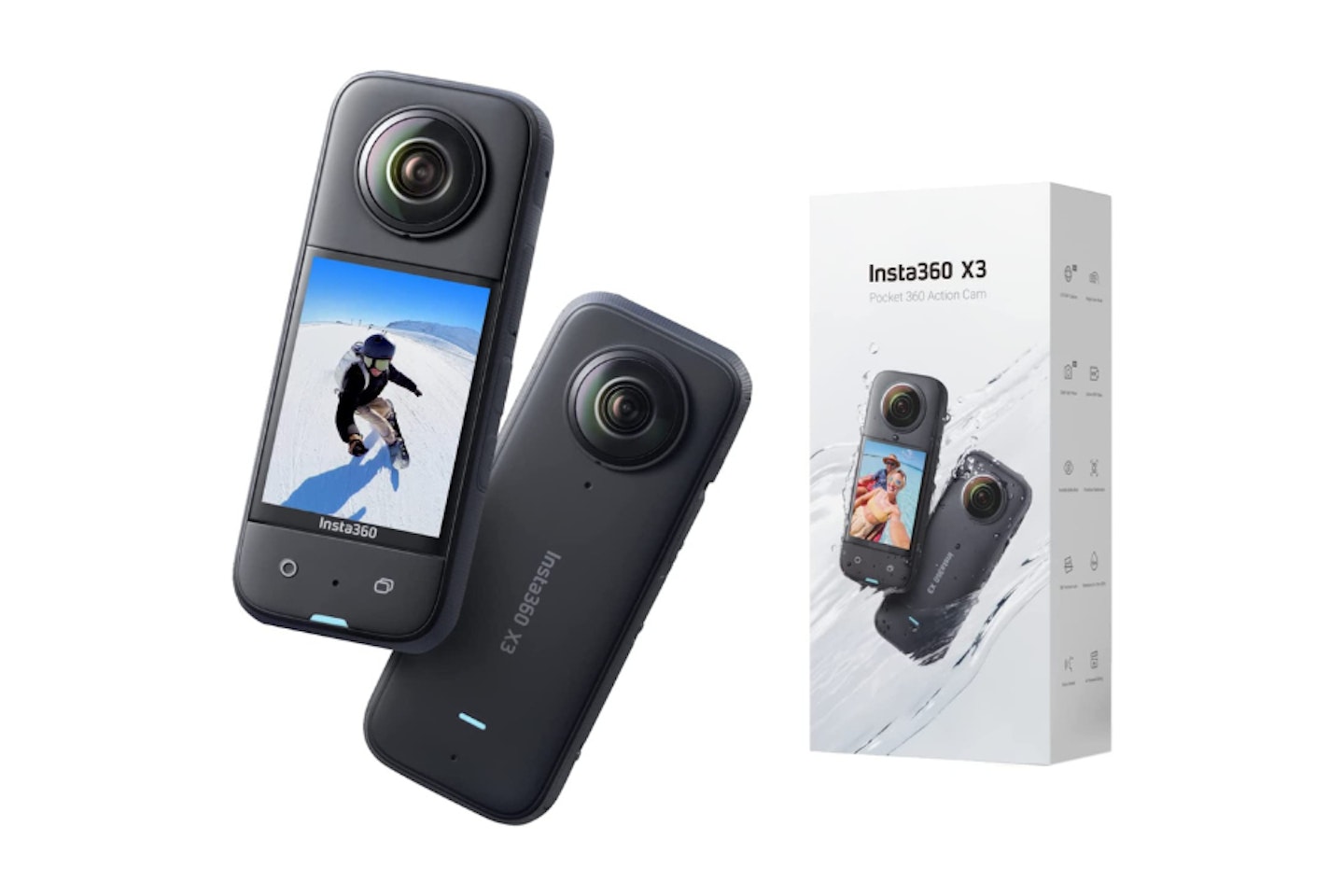
Pros
- Fantastic 360-degree footage
- Good build quality
- Easy to use software
- Very fast startup - never miss your shot
Cons
- Single-lens footage isn't great
- Less versatile than Insta360's own products
| Video Resolution: | 5.7K 360-degree 4K@30fps |
| Dimensions: | 114 x 46 x 33.1mm |
| Battery Life: | Approximately 81 minutes during use |
| Modes: | Active HDR, Timelapse, Bullet Time, Timeshift, Single-lens Mode |
| Screen: | Touchscreen |
| Connections: | Wi-Fi, Bluetooth 5.0, USB-C |
How did the Insta360 X3 perform: From B-roads to Bahrain
I connected the X3 to a motorbike with the optional Motorcycle Kit and Selfie Stick, and even with our sports bike’s clip-on handlebars, I was able to find a few mounting points. Naked and retro bikes will have more mounting points (including on the handlebar) but I was able to find several mounting points on my Yamaha R7. In addition to the wing mirror mounts, I used a claw and ball-and-socket arm to attach the Insta360 to the engine crash protection and rear footpegs.
The Insta360 had to face a very different set of problems in Bahrain. Rather than attaching the X3’s mounting accessories, I used the provided Selfie Stick and walked around in the sunny Bahrain paddock. We also poked the X3 through fences and over walls to get as much interesting fly-on-the-wall footage as possible.
But before I get into what the X3 is like to use while on the go, it’s first worth talking about the Selfie Stick. A key part of the InstaX3 experience, the Insta360's X3 Selfie Stick can be extended via a sturdy telescopic mechanism, where there’s enough resistance preventing it from collapsing. It’s an incredibly crucial part of how you use the X3 camera, and it works wonderfully, with little concern about the camera's safety or missing the perfect shot.
How good is it?
While the Insta360’s existing products certainly don’t feel cheap, the X3 is a significant cut above them in practically every way. Roughly the same size as a pre-smartphone-era mobile phone (the Nokia 3310 undoubtedly comes to mind), the X3 is solid and hefty in the hand – with a build quality that suggests it’ll survive a drop or several.
Around the edge of Insta360's X3 is a textured finish which also covers its rubber switches, giving it a water-tight feel – and then there’s the inviting 2.6-inch rectangular screen, with some superb touchscreen functionality. Swiping through menus, exploring various modes and toying with features effortlessly, the X3's screen is quite easily one of the most pleasant aspects of the X3 camera - with a vivid, precise and detailed image display, which happens to be flush with the rest of the device. It's certainly a small detail, but it oozes quality, certainly something you'd come to expect at its high price.
The unshakeable 5.7K MP 360-degree footage of the Insta360 X3 should be the primary reason you’re buying this camera – because its one-lens performance is solid, but lags behind its much more impressive focal point. Put it next to a contemporary GoPro or Insta360’s other gear and you won’t be impressed, but stick to 360-degree footage and you'll see precisely where your money’s going. Using the X3 in its most zoomed-out mode, the quality is sharp, displaying a range of vivid and natural colours – with the X3’s performance being simply decent in low light and quite excellent in the sun.
The footage from Bahrain wasn’t blown out, and the X3 was able to balance the cloudless skies with the sandstone buildings while keeping all the detail you’d want. Lowlight performance was usable, though clearly not the X3’s strong suite - expect a sprinkling of noise and artefacts on your footage once you correct the exposure.
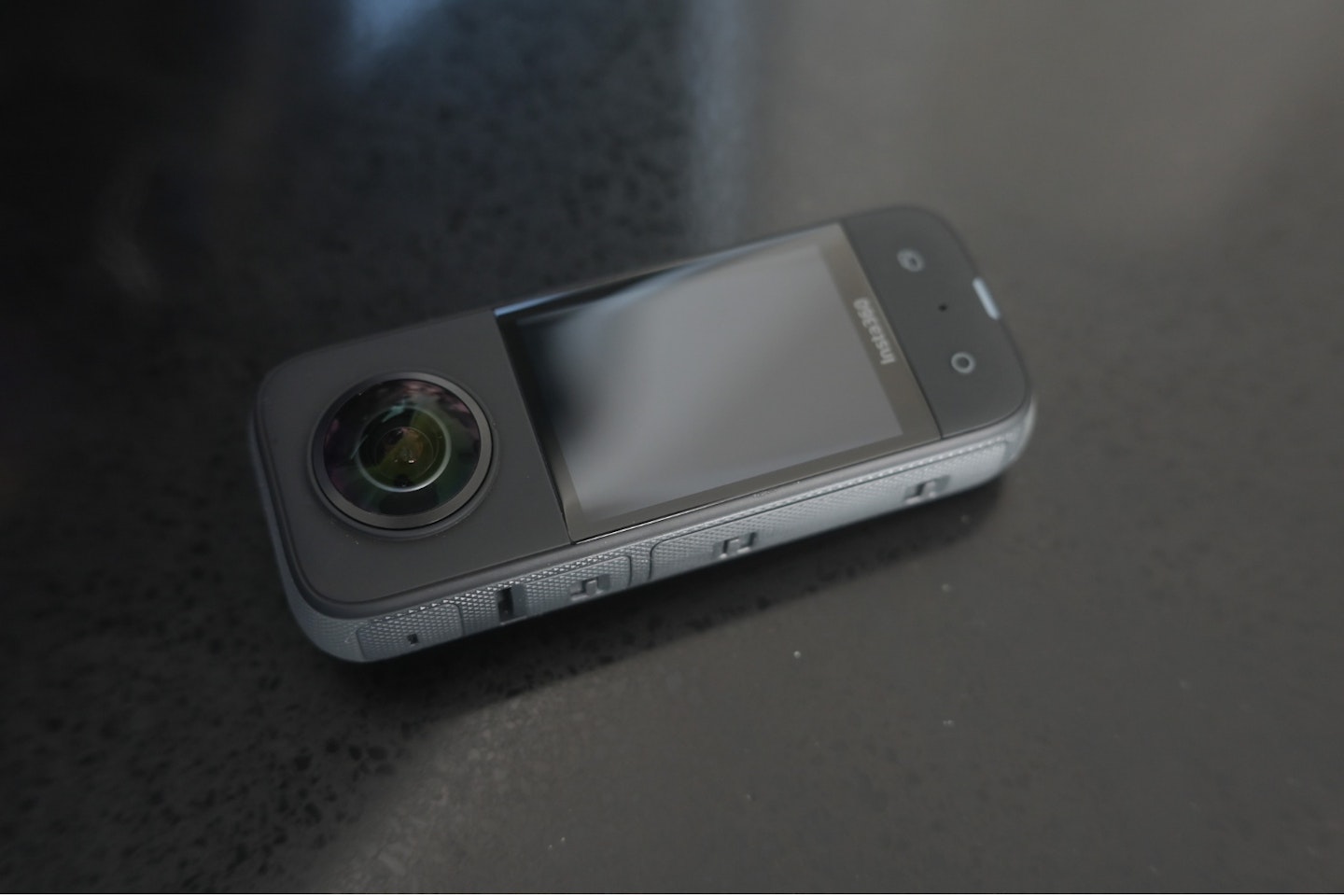
The most impressive thing from our bike footage was how it handled wind noise, despite often being suspended in the elements, the Insta360 was able to pick up chunky engine sounds from our parallel twin – especially when stationary. A wind noise reduction algorithm clearly kicked in at speed, and although it sounded slightly artificial it was still a more than welcome perk of the camera's impressive technology.
One of the best things about the Insta360 during testing was the 'Quick Start' and 'Quick Standby' buttons. When in traffic I turned the camera off, but I was easily able to boot it up at the lights whenever a more interesting, clearer stretch of tarmac appeared before me.
As for the problems? 5.7k MP sounds like a lot but when you start to flatten out the footage, you’ll soon be aware of its limitations. Some Bahrain content was filmed a little too far from the cars and zooming further in soon saw the footage become unusable. Top tip: try and get as close to your subject as possible – you can’t do as much as you’d think in post.
Like other Insta360 products, the X3 leans on the brand’s super-intuitive software: it’s incredibly simple to use while editing, quickly changing between modes and more - it's certainly one of the highlights of this camera.
Verdict
The Insta360 X3 is one of the best 360-degree cameras on the market right now. Delivering stunning quality and competent sound (even in the wind) and combining it with class-leading editing software, the X3 has everything you could want from a 360-degree camera. Whether or not it’s worth the money compared to Insta360’s other products depends very much on how useful you think 360-degree footage is.
Not many action cameras can do 360 footage like the X3, but many can do much better single-lens footage. If 360-degree content isn’t essential, we’ve got a list of action cameras that could make a good alternative. But if 360-degree footage is prominent in your creative endeavours – then an X3 is your best bet.
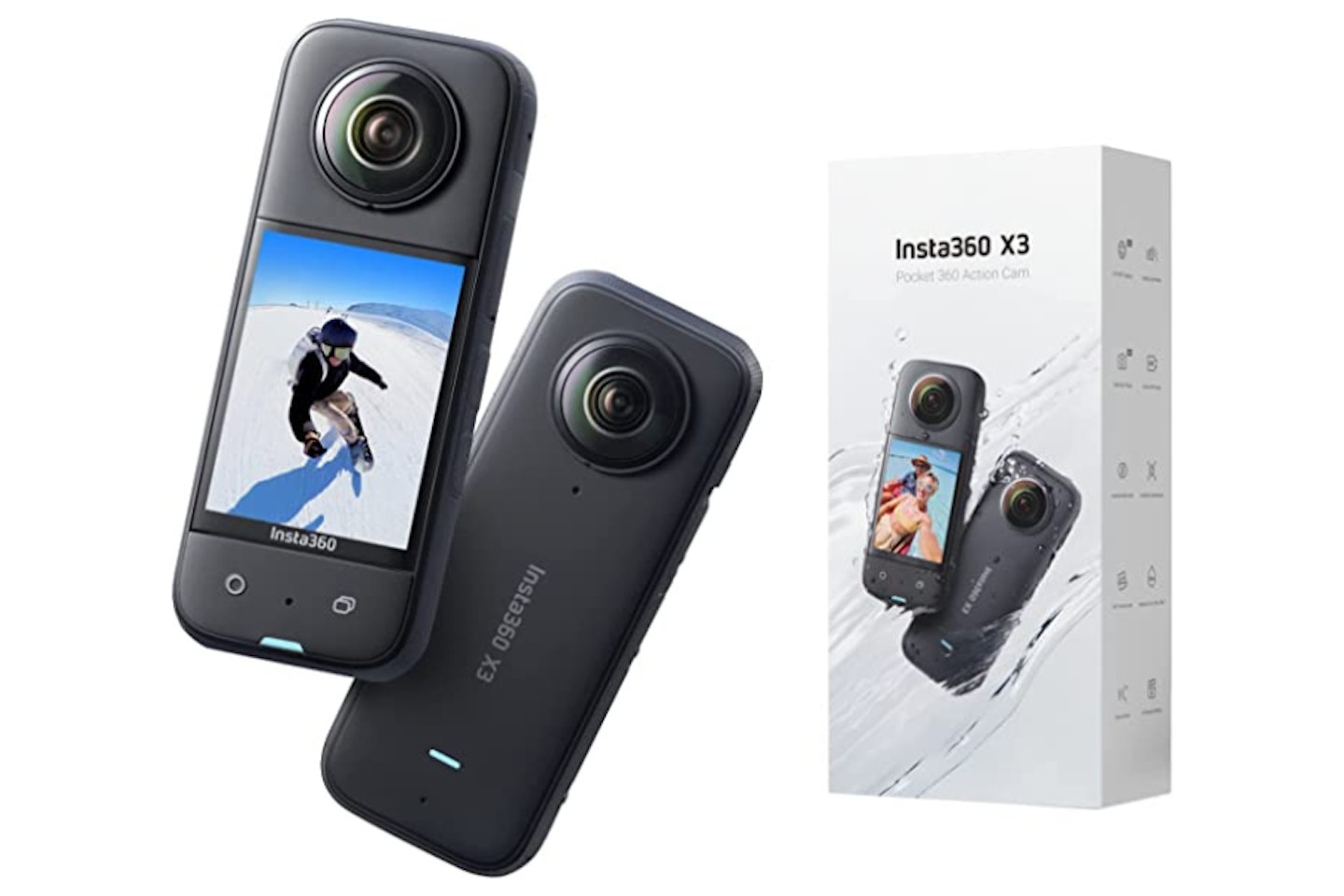
Pros
- Fantastic 360-degree quality
- Good build quality
- Easy-to-use software
- Very fast startup so you don't miss your shot
Cons
- Single-lens footage isn't amazing
- Less versatile than Insta360's own products
| Video Resolution: | 5.7K 360-degree 4K@30fps |
| Dimensions: | 114 x 46 x 33.1mm |
| Battery Life: | Approximately 81 minutes during use |
| Modes: | |
| Screen: | |
| Connections: |
More products to consider:
How we tested the Insta360: into the extremes
I tested the Insta360 X3 by throwing it into the two most demanding scenarios we could think of. First, I attached the X3 to a motorbike and braved the cold and wet British roads.
A few days later we dried everything off and took it to the pounding heat of Bahrain for F1’s 2023 pre-season test, where it faced high temperatures, higher decibels and constant use, back-to-back with freezing temperatures and lashings of wind. We’re not sure testing can be more varied than that.
